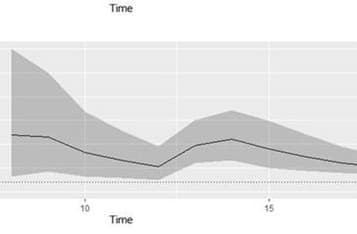Lockdown could cut virus spread rate in half: Danish health agency

Denmark's SSI health agency has estimated that the tough lockdown measures the country has put in place could cut the rate the coronavirus pandemic spreads in the country by as much as half.
SSI (Statens Serum Institut), which is responsible for combatting infectious diseases in Denmark, said in its evaluation that it now believed that the virus's reproduction rate in Denmark before lockdown measures were put in place had been 2.1.
READ ALSO:
-
Coronavirus LATEST: Coronavirus deaths in Denmark rise by a third to 32
-
Denmark extends coronavirus lockdown a further fortnight
-
Why is Denmark's coronavirus lockdown so much tougher than Sweden's?
This means that each person who caught the disease infected on average 2.1 more people over the course of their illness. The agency said it had developed this estimate by analysing of the rise in daily confirmed cases from 33 a day on March 13 to 83 cases a day on March 18, before the lockdown measures were put in place.
"If the current measures in society continue beyond March 30, the number of reproductions, that is, the number of people to whom each infection carries the infection, could be reduced by 30% to 50%," the institute estimated.
It said it was basing its mathematical models on data from Italy, where the transmission rate had been higher at 2.6.
But the agency warned that achieving such a reduction would also require keeping public awareness and adherence to social distancing measures high throughout the spring.

Comments
See Also
SSI (Statens Serum Institut), which is responsible for combatting infectious diseases in Denmark, said in its evaluation that it now believed that the virus's reproduction rate in Denmark before lockdown measures were put in place had been 2.1.
READ ALSO:
- Coronavirus LATEST: Coronavirus deaths in Denmark rise by a third to 32
- Denmark extends coronavirus lockdown a further fortnight
- Why is Denmark's coronavirus lockdown so much tougher than Sweden's?
This means that each person who caught the disease infected on average 2.1 more people over the course of their illness. The agency said it had developed this estimate by analysing of the rise in daily confirmed cases from 33 a day on March 13 to 83 cases a day on March 18, before the lockdown measures were put in place.
"If the current measures in society continue beyond March 30, the number of reproductions, that is, the number of people to whom each infection carries the infection, could be reduced by 30% to 50%," the institute estimated.
It said it was basing its mathematical models on data from Italy, where the transmission rate had been higher at 2.6.
But the agency warned that achieving such a reduction would also require keeping public awareness and adherence to social distancing measures high throughout the spring.

Join the conversation in our comments section below. Share your own views and experience and if you have a question or suggestion for our journalists then email us at [email protected].
Please keep comments civil, constructive and on topic – and make sure to read our terms of use before getting involved.
Please log in here to leave a comment.